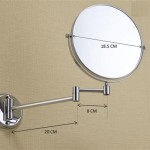Removing Spray Paint from a Mirror: A Comprehensive Guide
Mirrors, commonly found in homes and commercial spaces, enhance aesthetics and functionality. Occasionally, these reflective surfaces are inadvertently subjected to spray paint, a situation that necessitates prompt and effective remediation. The removal of spray paint from a mirror requires careful consideration to avoid scratching the glass or damaging the reflective backing. This article provides a comprehensive guide to safely and effectively removing spray paint from a mirror, outlining various methods and precautions to ensure optimal results.
The successful removal of spray paint hinges on several factors, including the type of paint, the amount of time the paint has been on the mirror, and the materials available for cleaning. Identifying the type of paint used (e.g., acrylic, enamel, lacquer) is crucial, as different paints respond differently to various solvents and cleaning agents. Fresh paint is generally easier to remove than paint that has thoroughly cured. The severity of the paint splatter or coverage also impacts the removal process, influencing the choice of cleaning method and the time required for completion.
Before commencing any cleaning process, the safety of the individual performing the task must be prioritized. Adequate ventilation is essential, especially when using chemical solvents. Wearing gloves protects the skin from irritation and potential chemical burns. Eye protection safeguards against splashes and fumes. Furthermore, testing the chosen cleaning solution on an inconspicuous area of the mirror is advisable to assess its compatibility with the reflective surface and avoid unintended damage.
Choosing the Right Removal Method
Several methods can be employed to remove spray paint from a mirror, ranging from gentler, less abrasive techniques to more aggressive solvent-based approaches. The choice of method depends on the aforementioned factors: paint type, age, and coverage. A gradual approach, starting with the least aggressive method and progressing to stronger solutions if necessary, is generally recommended. This minimizes the risk of damage to the mirror's surface.
Mild Soap and Water: For fresh, lightly applied spray paint, a solution of mild soap and warm water can be surprisingly effective. The soapy water helps to loosen the paint's bond with the glass surface, allowing it to be gently wiped away. This method is particularly suitable for acrylic-based spray paints, which are generally water-soluble when fresh. To apply this method, mix a small amount of dish soap with warm water. Dampen a soft, lint-free cloth with the solution and gently wipe the affected area. Avoid using abrasive scrub brushes or pads, as these can scratch the mirror's surface. After wiping, rinse the mirror with clean water and dry it with another clean, lint-free cloth.
Vinegar: White vinegar is a mild acid that can dissolve some types of paint, particularly latex-based paints. It is also a safe and readily available household cleaner. To use vinegar, heat it slightly (microwave for a short period). Do not boil the vinegar. Apply the warm vinegar to the affected area using a clean cloth or sponge. Allow the vinegar to sit on the paint for several minutes to soften it. Wipe away the softened paint. Repeat the process as needed. Rinse the mirror thoroughly with clean water and dry it with a lint-free cloth.
Steam: The use of a steamer can be an effective and non-chemical method for loosening spray paint. The heat from the steam softens the paint, making it easier to remove. Direct the steam nozzle towards the painted area, holding it a few inches away from the surface. Use a plastic scraper or a soft cloth to gently remove the softened paint as the steam is applied. Be cautious when using steam near the edges of the mirror, as excessive heat can damage the backing or the frame. Wipe the mirror clean and dry after steaming.
Solvents and Chemical Removers
For more stubborn or dried-on spray paint, stronger solvents and chemical removers may be necessary. These products should be used with caution, following the manufacturer's instructions carefully and ensuring adequate ventilation. It is essential to test the solvent in an inconspicuous area before applying it to the entire affected surface. The choice of solvent depends on the type of paint and the user's preference.
Isopropyl Alcohol (Rubbing Alcohol): Isopropyl alcohol is a relatively mild solvent that can dissolve some types of spray paint. It is generally safe for use on glass and is less likely to damage the mirror's surface than stronger solvents. To use isopropyl alcohol, saturate a clean cloth with the alcohol and gently rub the painted area. Allow the alcohol to sit on the paint for a few minutes to soften it. Wipe away the softened paint with a clean cloth. Repeat the process as needed. Rinse the mirror with clean water and dry it with a lint-free cloth.
Acetone (Nail Polish Remover): Acetone is a stronger solvent than isopropyl alcohol and can effectively remove many types of spray paint, including enamel and lacquer paints. However, it should be used with caution, as it can damage some plastics and finishes. Always test acetone in an inconspicuous area before applying it to the entire affected surface. Wear gloves and eye protection when using acetone. Apply acetone to the painted area using a clean cloth or cotton ball. Allow it to sit for a short period to dissolve the paint. Wipe away the softened paint with a clean cloth. Rinse the mirror thoroughly with clean water and dry it immediately with a lint-free cloth. Prolonged exposure to acetone can dull the reflective surface.
Paint Thinner (Mineral Spirits): Paint thinner, also known as mineral spirits, is a solvent commonly used to thin oil-based paints and clean paint brushes. It can also be effective for removing spray paint from mirrors. However, paint thinner is a flammable and potentially hazardous substance, so it should be used with extreme caution. Ensure adequate ventilation and wear gloves and eye protection. Apply paint thinner to the painted area using a clean cloth. Allow it to sit for a short period to soften the paint. Wipe away the softened paint with a clean cloth. Rinse the mirror thoroughly with clean water and dry it with a lint-free cloth. Dispose of used cloths and solvents properly.
Commercial Paint Removers: Several commercial paint removers are specifically formulated for removing paint from various surfaces, including glass. These products typically contain a blend of solvents and other chemicals designed to break down the paint's bond with the surface. When using a commercial paint remover, carefully follow the manufacturer's instructions. Apply the remover to the painted area using a brush or cloth. Allow it to sit for the recommended time, and then scrape away the softened paint with a plastic scraper. Rinse the mirror thoroughly with clean water and dry it with a lint-free cloth. Commercial paint removers can be harsh, so testing is crucial.
Scraping Techniques
In some cases, a scraper may be necessary to remove stubborn spray paint. However, using a metal scraper directly on the mirror's surface can cause irreparable scratches. Therefore, a plastic scraper specifically designed for glass surfaces is recommended. When scraping, hold the scraper at a low angle and apply gentle pressure. Avoid pressing too hard, as this can scratch the mirror. Work in small sections, removing the paint gradually. After scraping, clean the mirror with a mild soap and water solution to remove any remaining residue.
Razor Blade Scraper (with Caution): While generally discouraged due to the high risk of scratching, a razor blade scraper can be used with extreme caution by experienced individuals. Use a new, sharp razor blade specifically designed for glass. Apply a lubricant, such as soapy water or glass cleaner, to the painted area. Hold the razor blade at a low angle and apply very light pressure. Work in small, overlapping strokes, carefully removing the paint. Avoid pressing too hard or using a dull blade, as this can cause scratches. After scraping, clean the mirror thoroughly with a mild soap and water solution.
Plastic Razor Blades: Plastic razor blades are a safer alternative to metal razor blades. They are less likely to scratch the mirror's surface, but they can still be effective for removing stubborn paint. Use a new, sharp plastic razor blade. Apply a lubricant to the painted area. Hold the blade at a low angle and apply gentle pressure. Work in small sections, removing the paint gradually. Clean the mirror with a mild soap and water solution after scraping.
Polishing and Cleaning After Paint Removal
After removing the spray paint, the mirror may have some residual streaks or cloudiness. Polishing the mirror can restore its clarity and shine. Use a glass cleaner specifically designed for mirrors. Spray the cleaner onto the mirror and wipe it clean with a lint-free cloth or paper towel. Avoid using abrasive cleaners, as these can scratch the surface. For a streak-free finish, use a clean, dry microfiber cloth to buff the mirror.
Proper maintenance can help prevent future instances of spray paint on mirrors. When painting in the vicinity of mirrors, cover them with plastic sheeting or drop cloths to protect them from overspray. Clean mirrors regularly to remove dust and grime, which can make it easier for paint to adhere to the surface. By following these precautions, the longevity and aesthetic appeal of mirrors can be preserved.
In situations where the mirror is antique, unusually delicate, or the individual is uncomfortable performing the cleaning process, it is prudent to consult with a professional cleaning service specializing in glass restoration. These professionals possess the expertise and tools necessary to safely and effectively remove spray paint without causing further damage. Their experience can be invaluable in preserving the integrity of valuable or irreplaceable mirrors.

13 Ways How To Get Spray Paint Off Mirror Re Decor More

13 Ways How To Get Spray Paint Off Mirror Re Decor More

How To Remove Spray Paint From A Mirror Cleaning Painted Walls Wall

Removing Spray Paint From A Mirror Do This Now

How To Remove Spray Paint From Plastic Mirror Glass And Metal

13 Ways How To Get Spray Paint Off Mirror Re Decor More

How To Remove Spray Paint From Your Mirror

How To Remove Spray Paint From Glass Easy Ways

Eliminate Paint From A Mirror Smart Tips To Get Off Mirrors

Removing Spray Paint From A Mirror Do This Now








